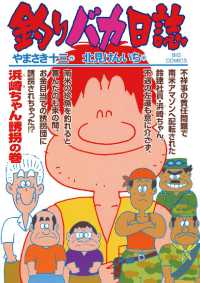Full Description
As the 20th century dawned, authors, artists, and filmmakers flocked to cities like Paris and Berlin for a chance to experience a bustling urban life and engage with other artists and intellectuals. Among them were German-speaking authors and filmmakers such as Harry Graf Kessler, Rainer Maria Rilke, August Endell, Alfred Döblin, Else Lasker-Schüler, Segundo de Chomón, and the brothers Max and Emil Skladanowsky. In their writing and artistic work from that period, they depicted the perpetual influx of stimuli caused by urban life—including hordes of pedestrians, bustling traffic, and a barrage of advertisements—as well as how these encounters repeatedly paralleled their experiences of watching early twentieth-century dance performances by Loïe Fuller, Ruth St. Denis, and Vaslav Nijinsky. The convergence these writers and filmmakers saw between the unexpected encounters during their urban strolls and experimental dance performances led to writings that interwove the two motifs.
Drawing on cultural, literary, dance, performance, and queer studies, Dancing with the Modernist City analyzes an array of material from 1896 to 1914—essays, novels, short stories, poetry, newspaper articles, photographs, posters, drawings, and early film. It argues that these writers and artists created a genre called the metropolitan dance text, which depicts dancing figures not on a traditional stage, but with the streets, advertising pillars, theaters, cafes, squares, and even hospitals of an urban setting. Breaking away from the historically male, heteronormative view, this posthumanist mode of writing highlights the visual and episodic unexpectedness of urban encounters. These literary depictions question traditional conceptualizations of space and performance by making the protagonist and the reader feel like they embody the dancer and the movement. In doing so, they upset the conventional depictions of performance and urban spaces in ways paralleling modern dance.
Contents
Table of Contents
Acknowledgments
Introduction
Chapter 1: Perceiving the City as Dancing Entity: Conceptions of Writing the Metropolitan Dance Text
Chapter 2: Swirling Affinities: Endell's and Fuller's Architecture, City Space, and Dance
Chapter 3: From Spectator to Practitioner: Developing Harry Graf Kessler's Queer Dance Aesthetic
Chapter 4: Bridging Representations of Gesture, Gesticulation and Early Twentieth-Century Dance in the City: Rilke's Veitstänzer in The Notebooks of Malte Laurids Brigge
Chapter 5: Documenting the Demise of Ballet and the Emergence of Modern Dance in the Hospital: Döblin's Early Texts on Dance and Space
Chapter 6: Cabarets, Cafes, and Cities: The Birth of Early Twentieth-Century Dance in Lasker-Schüler's Writing and Drawings
Chapter 7: From Drawings to Early Cinema: Lasker-Schüler's Protocinematic Images and Experimental Films of Chomón and the Skladanowsky Brothers
Coda
Bibliography
Index








